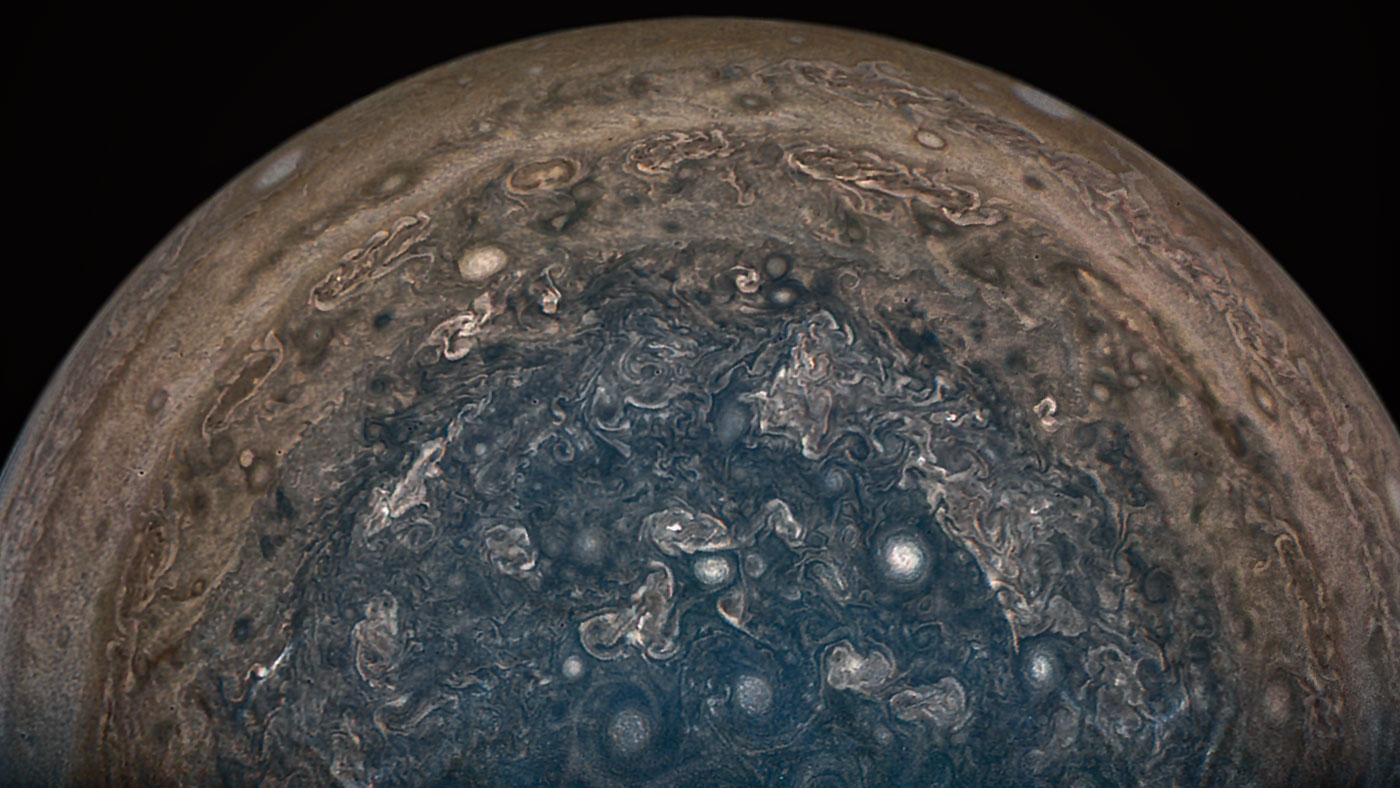NASA’s Juno has kept documenting the things that it comes across in the outer space and has sent back the images to the space agency. We have already heard and seen with Juno, the auroras on the Jupiter and the storm and anti-cyclones. In accordance with the reports of this week, NASA has demonstrated a 3D rendition of Jupiter’s storms and the planet’s North Pole.
As revealed at the European Geosciences Union General Assembly in Vienna at Austria on Wednesday, the 1 minute and 20-seconds plunge through what seems to be hell’s inferno consists of pictures taken by a camera abroad the Juno spacecraft that now is orbiting the planet.
The key motive of this mission is to begin understanding the inner functioning of Jupiter both in relation to the galaxy as a whole and as a way for NASA to understand the processes which lead to the creation of the planet. What the team is to check is the- level of water in the atmosphere of the planet and the different minerals, rocks, and metals that make up the composition of the planet. Although it may seem insignificant, the team would even tend to estimate the exact temperatures which are there coupled up with the magnetic pull and the level of gravity.
Another Juno co-investigator, Tristan Guillot said that Juno assisted them to find out as to how the interior of Jupiter rotates. The fact is actually something which they were unable to detect in the past, as it was tough for scientists to differentiate between the extreme models of the interior rotation of the Jupiter.
Juno severely has hiked the level of accuracy and precision of data collection as before this satellite was out there gathering the information, the only pieces of evidence which could have been collected were only because of the satellites on Earth which did not possess the similar level of accuracy and precision.
The animation zooms in from the visible-light images of Jupiter to display the 3D reconstruction that was made from JIRAM pictures taken during the fourth high-speed flyby of Juno, or perijove, of the planet on 2nd February 2017. Back in March NASA reported that the Juno discovered that the atmospheric winds on Jupiter travel deep into its atmosphere and can be considered to be unearthly.
The primary mission of Juno should end after its 14th perijove on 16 July 2018. The pictures are really crucial as they provide the data that was required so that the scientists could understand the interior structure of the planet and its magnetic field and composition. This information would help the researchers guide the remaining observations of the spacecraft.
